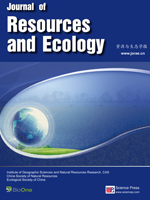Grassland in northern Tibet plays an important role in the eco—security of the Qinghai-Tibet Plateau and the restoration of deserted and degraded grassland is now a focus for governments. We used remote sensing, simulations and field surveys to analyze the current status, trends and causes of grassland degradation across northern Tibet. We develop several recovery models for degraded grassland based on field experiments in the region. We found that slightly degraded grassland covers 62% and that moderate to severely degraded grassland occupied 15.1% in the Chang Tang Plateau. The amount of degraded alpine steppe increased from 1991, and the amount of area classified as severely degraded increased sharply from 2000. The cause of degraded steppe in northwestern Tibet may be the result of warming and an arid climate; the cause of severe degradation in mid and eastern regions was mainly from overgrazing. Three restoration models are proposed for different levels of degradation: “enclosures” for slightly degraded areas, “enclosures with fertilization” for moderately degraded areas, and “enclosure with oversowing and fertilization” for severely degraded areas.
BioOne.org will be down briefly for maintenance on 17 December 2024 between 18:00-22:00 Pacific Time US. We apologize for any inconvenience.
How to translate text using browser tools
1 March 2013
Causes and Restoration of Degraded Alpine Grassland in Northern Tibet
Wang Jingsheng,
Zhang Xianzhou,
Chen Baoxiong,
Shi Peili,
Zhang Junlong,
Shen Zhenxi,
Tao Jian,
Wu Jianshuang
ACCESS THE FULL ARTICLE

Journal of Resources and Ecology
Vol. 4 • No. 1
March 2013
Vol. 4 • No. 1
March 2013
Chang Tang Plateau
driving force
grassland
restoration models
steppe degradation





